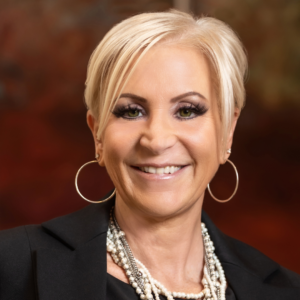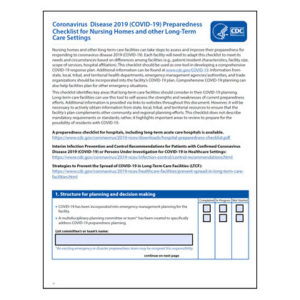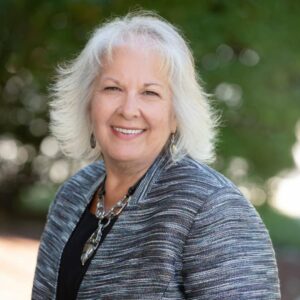Risky business
Risk management has become an important aspect of day-to-day nursing home administration and patient care in today’s litigious society.
Defined as the facility-wide implementation of policies and procedures to mitigate the chances of injury or damage, risk management promotes compliance in areas where nursing homes are more likely to be the subject of lawsuits, survey enforcement penalties or suffer negative publicity.
Effective, data-driven risk management will be proactive, rather than just reactive, and begin with the development of facility-wide policies and procedures that include standards of practice and care protocols. These will be supported by staff education, including federal and state mandated and competency training that leverages technology to document and track staff compliance.
 “I always tell facilities, ‘Take your policies and procedures and train from those.’ In order to implement an effective program, it needs to become a training guide for the education of the staff,” says Cindi Falcone, senior vice president of risk management for Pendulum, an Albuquerque, N.M.-based risk management consulting firm. “The importance of training on the facility’s policies and procedures is two-fold: it promotes better resident outcomes and it helps with the defensibility of a claim.”
“I always tell facilities, ‘Take your policies and procedures and train from those.’ In order to implement an effective program, it needs to become a training guide for the education of the staff,” says Cindi Falcone, senior vice president of risk management for Pendulum, an Albuquerque, N.M.-based risk management consulting firm. “The importance of training on the facility’s policies and procedures is two-fold: it promotes better resident outcomes and it helps with the defensibility of a claim.”
DOCUMENTATION IS KEY
Without established policies and procedures and effective training to back them up, a nursing home is at great risk for claims and survey deficiencies.
“If a person falls and there is a negative outcome, often the plaintiff’s attorney adds to their list of allegations that the staff hasn’t been trained or the staff hasn’t been compliant in following the guidelines of their own facility,” says Falcone. “This is why a lot of facilities shy away from writing policies and procedures, but this is a fallacy. Even if a facility does not have written policies and procedures, staff performance will be measured against the medical and nursing ‘standard of care,’ so the facility will be best off implementing written policies unique to their facility to serve as a guideline for their staff’s performance.”
According to Falcone, documentation is key. If a facility has a procedure and policy that’s “in line with the standard of practice” and documented that they’ve trained and monitored the staff for compliance, a plaintiff’s attorney will have more difficulty proving their allegations are true.
“Most claims are really not something that the nursing home has done wrong, but when you have poor documentation and poor training, you have no defense,” says insurance underwriter Jonathan Swann, director of CFC Underwriting, London. “Good documentation and charts prove you have done your work correctly and you get this done by good training. You’ll be able to defend yourself better and minimize the claim. Things will continue to go wrong, but you can better defend yourself.”
Aicota Health Care Center, Aitkin, Minn., implemented online training to reinforce its facility’s existing policies and procedures and track staff compliance when a new insurance carrier provided it to them as a way to further minimize risk.
“While it hasn’t completely solved all our risk management issues, training is the most important tool we have to manage our risks and online training offers us another training option that is efficient and that the staff likes,” says Alison Matalamaki, administrator, Aicota Health Care Center.
INSURANCE PREMIUM CONSIDERATIONS
Without an effective risk management program, providers are also at risk for increased insurance premiums. According to Swann, insurance premiums will rise this year as much as 10 percent to 20 percent in the largest U.S. cities, as insurance providers can no longer afford to swallow the costs of growing nursing home risk. While most claims come from poorly managed homes, every home needs to make risk management a priority, from the top down.
“The well-run homes can still get claims, but the poorly run homes will get big claims,” says Swann. “If you want to improve the risk, you need buy in from the top management.”
Nursing home administrators will create truly effective risk management training by moving beyond required courses to educate staff annually on topics that carry a high risk of liability (for high-dollar claims), including abuse, falls, skin and wounds, elopement and medication management. By layering different methods of training for required and recommended courses, training programs can be tweaked as policies change and a facility’s risks evolve.
Like Aicota, Village Manor nursing home, Wood Village, Ore., instituted online training when its new insurance company offered it to them in lieu of an in-service audit at sign-on. Today, it’s a crucial part of their risk management program.
“Online training has enhanced our bi-monthly in-services. We currently have 80 percent of our employees on the program, enhancing their education and reinforcing everything—our policies and procedures and the information they’ve gained from in-services,” says Rena Smith, assistant administrator, Village Manor. “You hire appropriately, interview your employees and after that, it’s all education, reinforcement and monitoring.”
Because a degree isn’t synonymous with skills competency and nursing home skills differ greatly from those needed to care for other populations, Falcone advises a skills competency review upon hire.
“We ask facilities to do a competency skills checklist where another RN or the DON looks at the new hire’s performance of skills. Are they doing it appropriately?” says Falcone. “If not, it translates to big time risk. If that nurse is involved in an incident and there’s a negative outcome, it’s going to go back to the facility that the staff isn’t competent.”
Staff stability also decreases risk. According to Swann, nursing home staff turnover can be as high as 50 percent, especially with Certified Registered Nurse Assistants (CRNAs), resulting in inconsistent practices and requiring training of new employees more often.
“If you have an administrator who has been there for five years, he has much less chance of a claim,” says Swann. “Stability in nursing homes leads to less claims.”
For Village Manor, creating an educated staff population is its best form of defense.
“I think education is awareness and as long as our employees are educated and aware we’re going to have good care, which means less deficiencies for risk management,” says Smith.
Tamar Abell, principal, Upstairs Solutions, is a third-generation nursing home owner and operator who managed 10 communities for over 15 years. In 2005, she founded Upstairs Solutions (www.upstairssolutions.com), an e-learning company for senior care communities. Abell can be reached at: tabell@upstairssolutions.com.
I Advance Senior Care is the industry-leading source for practical, in-depth, business-building, and resident care information for owners, executives, administrators, and directors of nursing at assisted living communities, skilled nursing facilities, post-acute facilities, and continuing care retirement communities. The I Advance Senior Care editorial team and industry experts provide market analysis, strategic direction, policy commentary, clinical best-practices, business management, and technology breakthroughs.
I Advance Senior Care is part of the Institute for the Advancement of Senior Care and published by Plain-English Health Care.
Related Articles
Topics: Articles , Executive Leadership , Risk Management











